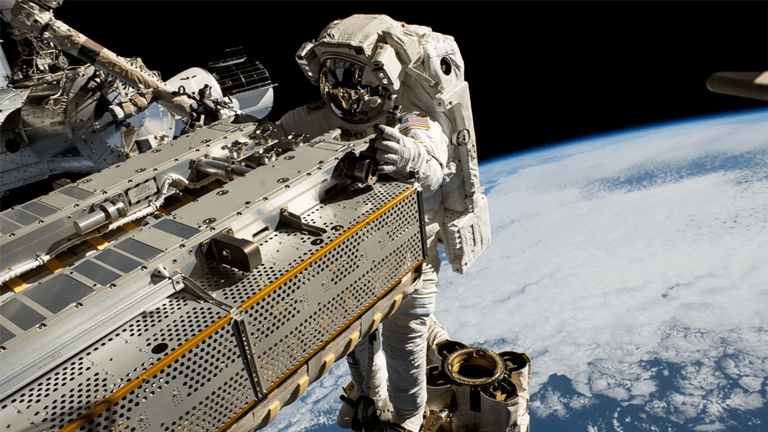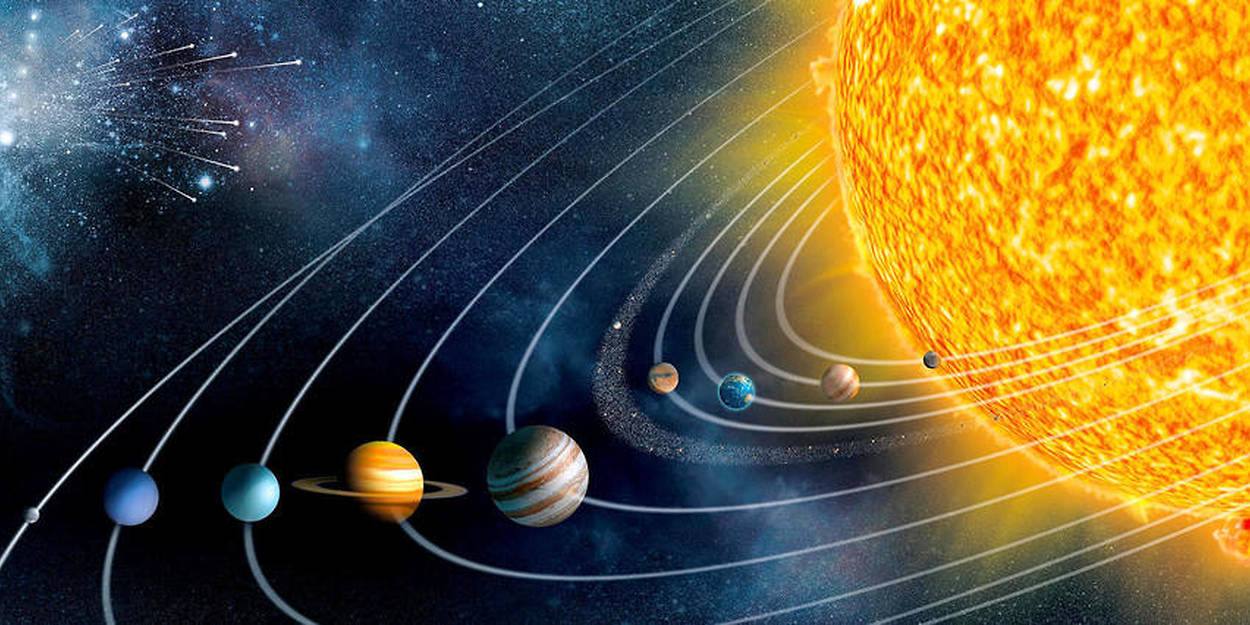
Scientists May Have Found A Whole New Region of Our Solar System
As anyone knows from reading a little about Albert Einstein or watching a sci-fi movie that wants to save a little on costs, it is possible to create artificial gravity in low-gravity environments.
As Einstein’s thought experiment involving a painter falling from a building and experiencing weightlessness shows, gravity and acceleration are equivalent. If you were inside a spaceship with no windows accelerating at 1G, you would not be able to tell whether you were inside such a spaceship or just sitting inside a metal box on Earth like an idiot.
While the thought of the painter, described by Einstein as his “happiest thought”, led him to the General Theory of Relativity, it has its uses in science fiction too. In short, it is theoretically possible to create artificial gravity by either constantly accelerating (good luck getting enough fuel) or creating a rotating spacecraft, providing artificial gravity via centrifugal force.
Having artificial gravity would be incredibly useful to any astronaut who happens to have evolved and grown up in a gravitational field. Living in low-gravity environments for extended periods of time takes its toll on astronauts and cosmonauts, who may develop everything from puffy faces to baby feet, and that is just for starters.
“Weightlessness is cool,” astronaut Chris Hadfield explained in a video for the Canadian Space Agency. “But it doesn’t come for free. Without constant load on your body, you can get incredibly lazy. Your muscles will start dissolving. Your bones will start getting reabsorbed back into your body.”
In order to counteract these effects, astronauts and cosmonauts are put through strict exercise regimes while aboard the International Space Station (ISS).

So why do we not simply create artificial gravity using a centrifuge, in order to protect the crew’s health?
One reason is that it is simply not doable yet, at least not without some unfortunate effects.
“The smaller the space craft is, the faster it has to rotate, so if you’re going to generate gravity, it’s got to be done with a very large spacecraft that spins very slowly. The bigger the disk, the slower you can rotate it,” John Page, a senior lecturer in the School of Mechanical and Manufacturing Engineering at the University of New South Wales, explained to ABC Science.
“This would avoid having a large gravitational difference between your head and your feet, which would result in blood accumulating at your feet and making you feel light headed.”
According to Page, in order to provide comfortable artificial gravity, you would need a ship far larger than a football field, when the ISS is about the size of a small apartment.
However, there is another, more pertinent reason why we would not even try to have artificial gravity on the ISS. The purpose of the space station is not to let astronauts float around and play some zero-G pranks; it is a floating laboratory with the purpose of conducting experiments in low-gravity environments.
“The International Space Station is a one-of-a-kind lab-oratory for a specific reason: microgravity,” NASA press officer Daniel Huot explained to Astronomy.com. “There is no other facility in existence that allows humans to conduct research in a sustained and stable microgravity environment where many disciplines, from material science to microbiology, encounter exciting new results.”
Astronauts study the effects of microgravity on everything from growing mouse embryos and bacteria, to what happens to fire outside of a strong gravitational field. Having artificial gravity, while something we may consider for long-distant missions in the far future, would be against the entire point of the ISS.
All “explainer” articles are confirmed by fact checkers to be correct at time of publishing. Text, images, and links may be edited, removed, or added to at a later date to keep information current.
Source : James Felton


![[ID: UQFmFbx9AS0] Youtube Automatic](https://campustv.ma/wp-content/uploads/2023/11/id-uqfmfbx9as0-youtube-automatic-360x203.jpg)
![[ID: RTwee3Z_uxs] Youtube Automatic](https://campustv.ma/wp-content/uploads/2024/09/id-rtwee3zuxs-youtube-automatic-360x203.jpg)
![[ID: R8MHudOfzf8] Youtube Automatic](https://campustv.ma/wp-content/uploads/2024/09/id-r8mhudofzf8-youtube-automatic-360x203.jpg)
![[ID: 9_TrGNOooRE] Youtube Automatic](https://campustv.ma/wp-content/uploads/2024/09/id-9trgnooore-youtube-automatic-360x203.jpg)

